- Bridgestone Japan Selects Avery Dennison Tire Tag for GT Racing
- Avery Dennison Opens Innovation Center in South Korea
- SimplyRFID, Retail TouchPoints Publish RFID-IoT Tech Guide
- Smart Packaging Market Expected to Reach $38.6 Billion by 2030
- New LoRaWAN Payload Codec API Announced for IoT
- Motion Ai Opens New Facility in Minnesota
Nov 03, 2022Presented here are recent news announcements in the radio frequency identification and Internet of Things industries.
Bridgestone Japan Selects Avery Dennison Tire Tag for GT Racing
Avery Dennison Smartrac has announced that Bridgestone Japan has selected its AD Maxdura tire tag for use by grand touring (GT) racing car teams. The tag was launched last year, and its selection followed a series of technical tests carried out by Bridgestone throughout 2022. Working with Bridgestone Japan, Avery Dennison and its partner ULS demonstrated that the Maxdura tag can perform under tough racing conditions.
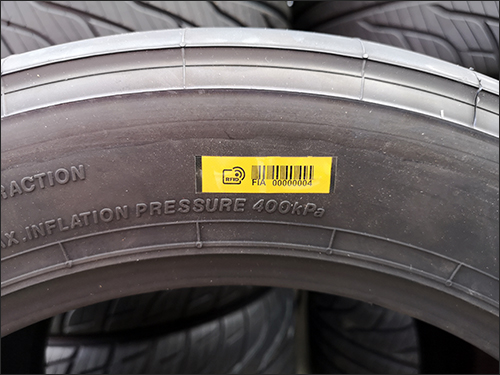 The tags are intended to provide the teams with data to help them prepare for races and improve performance. Since a unique identifier can be assigned to every tire, information can be read automatically, enabling teams and organizers to identify precisely which tires are in use at any given time. Such automation, according to the company, will allow teams to boost real-time inventory and logistics, as well as make races more interesting for spectators.
The tags are intended to provide the teams with data to help them prepare for races and improve performance. Since a unique identifier can be assigned to every tire, information can be read automatically, enabling teams and organizers to identify precisely which tires are in use at any given time. Such automation, according to the company, will allow teams to boost real-time inventory and logistics, as well as make races more interesting for spectators.
"We use RFID technologies especially for tire identification," said Nicolas Aubourg, the FIA's head of performance, in a prepared statement. "For environmental, cost, sporting and technical reasons, the tires are constrained by technical rules, and the quantity each competitor can use is limited. Thanks to RFID technology, we ensure a quick and reliable identification of each tire used in a competition and, thus, we can then check that our rules are fulfilled by all the competitors."
Providing a unique ID number for each tire is expected to improve reuse and recycling processes after each race, Avery Dennison reports, making events more sustainable. GT racing, according to the company, requires tire durability and can thus benefit from RFID tagging across the automotive sector. The Fédération Internationale de l'Automobile (FIA), the worldwide motorsport governing body, has urged teams to use tires embedded with RFID transponders for environmental and cost reasons. To that end, it has tested the Maxdura tag and approved Impinj's M730 IC for use at motorsport events.
"The use of RFID in motorsport is just the prelude to a broader revolution in tire production that will affect the automotive industry more broadly," Lauri Hyytinen, Avery Dennison Smartrac's market development manager for the automotive sector, added in the statement. "Every year, some three billion tires are manufactured globally. RFID introduces new safety features which will make it easier to identify when a tire needs to be replaced. It will also help eliminate tire fit errors, make them easier to recycle and have benefits throughout the supply chain for manufacturers, wholesalers and garages."
Avery Dennison Opens Innovation Center in South Korea
Avery Dennison has also announced that it has opened I.Lab, an innovation center built to demonstrate various types of RFID inlays and digital ID solutions in South Korea. The I.Lab, a showroom where customers can experience RFID technology, is the company's sixth global innovation center, following other such facilities in the United States, the Netherlands, India, Brazil and China.
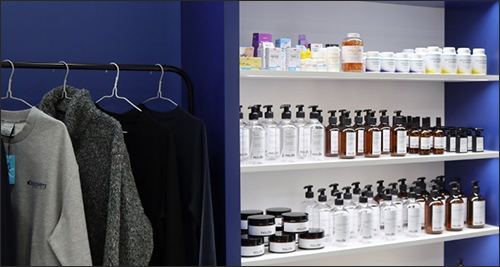 The South Korea I.Lab is expected to accelerate the awareness and demand for RFID technology, according to Avery Dennison. The facility will provide RFID academy programs for corporate customers that are considering integrating the technology, and the company anticipates offering solution demonstrations down the line, as well as consulting with its solution partners. The space is divided into seven industry segments (apparel, beauty, healthcare, food and beverage, logistics, aviation and automotive), in which visitors can interact with physical demonstrations designed to showcase the benefits of RFID in real-world applications.
The South Korea I.Lab is expected to accelerate the awareness and demand for RFID technology, according to Avery Dennison. The facility will provide RFID academy programs for corporate customers that are considering integrating the technology, and the company anticipates offering solution demonstrations down the line, as well as consulting with its solution partners. The space is divided into seven industry segments (apparel, beauty, healthcare, food and beverage, logistics, aviation and automotive), in which visitors can interact with physical demonstrations designed to showcase the benefits of RFID in real-world applications.
"We are very proud to officially open our South Korean I.Lab as part of Avery Dennison's global network of I.Labs," said Marcel Cote, Avery Dennison Smartrac's sales and marketing director the APAC region, in separate prepared statement. "This will provide our local customers and partners a fantastic facility to experience firsthand the power of RFID and digital solutions across various applications and use cases."
RFID has been widely used throughout South Korea for the past decade, Marcel said, but evolving industry dynamics are driving the demand for such solutions. "Particularly the spike in e-commerce demand globally significantly increases the importance of supply chain visibility and inventory accuracy," he added in the statement. "In parallel, new solutions to help brands achieve their sustainability goals by enabling a circular economy are also increasing."
JW Paik, the company's senior business development manager for South Korea, said: "We are in the midst of global trends like e-commerce and logistics markets, sustainability, and resource recycling are fast-growing during COVID-19, it has become a key topic for governments and corporations. Our I.Lab will be a center of communication where customers can find success stories and experience products and solutions. It will definitely help our end users to integrate these technologies into their processes"
SimplyRFID, Retail TouchPoints Publish RFID-IoT Tech Guide
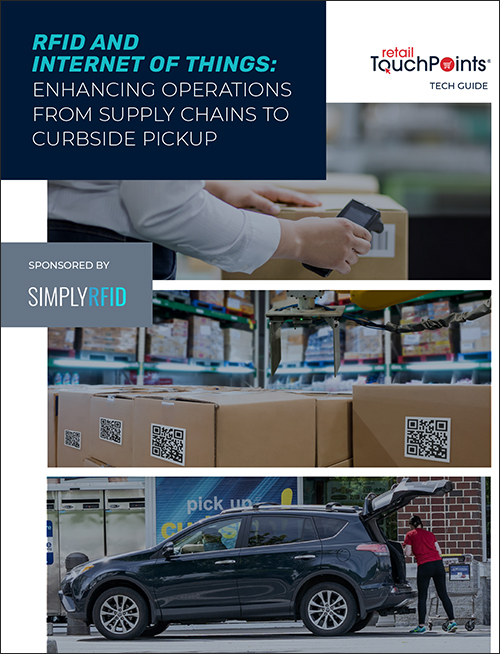 Retail TouchPoints and SimplyRFID have released a new guide discussing radio frequency identification (RFID) and Internet of Things (IoT) technologies, with a focus on recent developments in retail. The report, titled "RFID and Internet of Things: Enhancing Operations from Supply Chains to Curbside Pickup," outlines notable trends in the retail supply chain industry. You can download the report, written by Retail TouchPoints editor Adam Blair, here. Among the findings:
Retail TouchPoints and SimplyRFID have released a new guide discussing radio frequency identification (RFID) and Internet of Things (IoT) technologies, with a focus on recent developments in retail. The report, titled "RFID and Internet of Things: Enhancing Operations from Supply Chains to Curbside Pickup," outlines notable trends in the retail supply chain industry. You can download the report, written by Retail TouchPoints editor Adam Blair, here. Among the findings:
- Global supply chain crises have put a premium on retailers, manufacturers and shippers knowing the exact location of cargo containers and the products within them, making it an area in which RFID can be an important data source.
- Retailers' desire to make popular BOPIS and curbside pickup operations more efficient and cost-effective has increased the need for real-time inventory and item location data within the store environment.
- The increasing popularity of smart consumer devices, including smartphones, home technology and automobiles, offers opportunities for IoT-enabled products to talk to them in ways that can support automated replenishment and provide retailers with a better understanding of post-purchase product usage.
- Rising consumer interest in circularity, sustainability and product origins makes item traceability a valuable asset for brands, particularly those in the luxury space or those targeting Gen Z consumers.
"RFID's main claim to fame—and it's a well-deserved one—is its ability to boost inventory accuracy at the store level," the tech guide explains. "Multiple tests have shown that placing RFID tags on items and scanning with either handheld or stationary readers can boost accuracy rates above 90 percent, a dramatic improvement over figures as low as 60 percent that have been industry averages. Better inventory accuracy is a benefit at any time, but the out-of-stocks and shortages that were prevalent during the worst of COVID-19 made it even more valuable."
According to the report, BOPIS and curbside pickup, both of which were greatly accelerated by the pandemic, are made more efficient when there's an easy way to know how many items are in a store and where they are at any given moment—in a back room, on a shelf, in an order prep area or on their way out the door.
Smart Packaging Market Expected to Reach $38.6 Billion by 2030
A new report published by Allied Market Research indicates the global smart packaging market generated $22.2 billion in 2020 and is projected to reach $38.6 billion by 2030, witnessing a compound annual growth rate (CAGR) of 5.5 percent from 2021 to 2030. Leading players in the global smart packaging market that were analyzed include 3M, Avery Dennison Smartrac, Ball Corp., BASF SE, Crown, International Paper, R.R. Donnelley & Sons, Stora Enso, Sysco and Zebra Technologies.
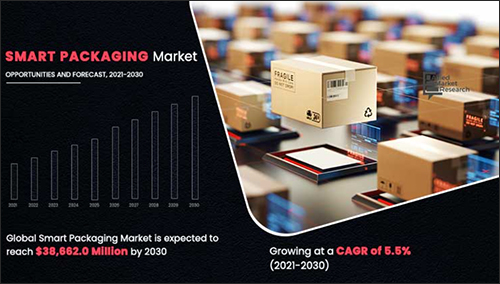 The report, titled "Smart Packaging Market by Type (Active Packaging, Intelligent Packaging, and Modified Atmosphere Packaging), End User (Food & Beverage, Healthcare, Automotive, Personal Care, and Others), and Material (Solid and Liquid): Global Opportunity Analysis and Industry Forecast, 2021-2030," can be downloaded here. It provides a detailed analysis of changing market dynamics, top segments, value chain, key investment pockets, regional scenario and competitive landscape.
The report, titled "Smart Packaging Market by Type (Active Packaging, Intelligent Packaging, and Modified Atmosphere Packaging), End User (Food & Beverage, Healthcare, Automotive, Personal Care, and Others), and Material (Solid and Liquid): Global Opportunity Analysis and Industry Forecast, 2021-2030," can be downloaded here. It provides a detailed analysis of changing market dynamics, top segments, value chain, key investment pockets, regional scenario and competitive landscape.
Changing lifestyle patterns in emerging countries due to rapid urbanization, as well as an increase in the consumption of beauty products and cosmetics with packaging advancement technology, are expected to drive the global market growth, according to Allied Market Research. However, the report notes, the excessive cost of active and intelligent packaging restrains that growth to some extent. On the other hand, untapped geographical regions present new opportunities in the coming years.
The COVID-19 pandemic led to a global lockdown, negatively impacting the global smart packaging market. Manufacturing activities were halted or restricted, while construction and transportation activities, along with their supply chains, were hampered on a global level. This, in turn, inhibited the manufacturing of smart packaging and reduced its demand in the market.
The report offers detailed segmentation of the global smart packaging market based on type, end user, material and region. Based on end user, the food and beverage segment held the highest market share in 2020, holding more than two-fifths of the total share, and it is expected to continue its leadership status during the forecast period. Moreover, the healthcare segment is estimated to register the highest CAGR of 6.2 percent from 2021 to 2030.
Based on material, the solid segment held the largest market share in 2020, holding more than two-thirds of the total share, and it is expected to continue its leadership status during the forecast period. The liquid segment is projected to register the highest CAGR of 5.9 percent from 2021 to 2030. Based on region, North America contributed to the highest share in terms of revenue in 2020, holding one-third of the global aircraft tires market, and is estimated to continue its dominant share by 2030. The Latin America, Middle East and Africa region is projected to manifest the fastest CAGR of 7.8 percent during the forecast period.
New LoRaWAN Payload Codec API Announced for IoT
The LoRa Alliance, a global association of companies backing the open LoRaWAN standard for IoT-based low-power wide-area networks (LPWANs), has expanded its LoRaWAN standard with the addition of TS013-1.0.0, an application programming interface (API) for application payload decoder-encoders (codecs). Adopting the new specification, according to the organization, will allow device manufacturers and application server providers to reduce deployment complexity, enabling them to deploy LoRaWAN devices at a massive scale.
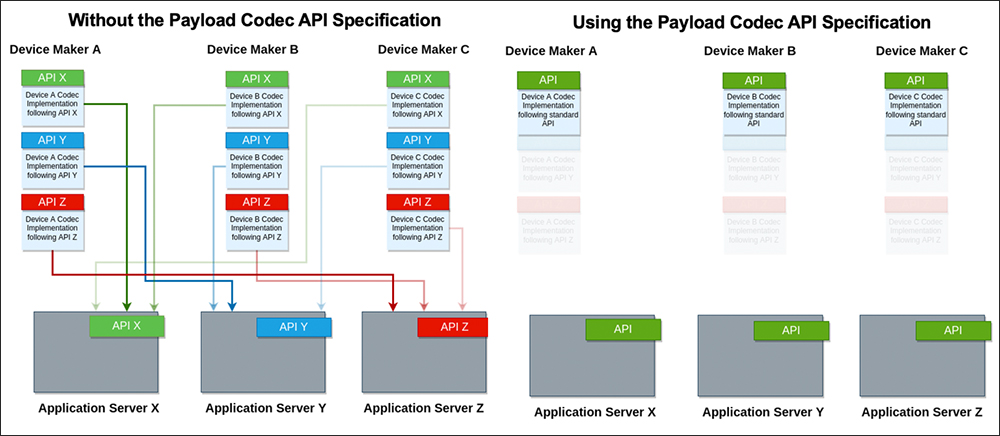
"LoRa Alliance members, working with their customers, identified a new opportunity to enhance ease-of-use," said Donna Moore, the LoRa Alliance's CEO and chairwoman, in a prepared statement. "By doing the work to develop a standardized application payload codec API, we are greatly simplifying the onboarding process, making it easier to integrate and deploy devices, and thereby facilitating massive LoRaWAN deployments. This new specification eliminates yet another barrier to massive IoT with a new standards-based approach."
When LoRaWAN is used to transport application payloads, messages are compactly encoded to minimize bandwidth usage. As messages reach the application server, they must be decoded to be read and processed. Previously, the organization explains, every device manufacturer or application developer had to write a specific codec for each device and application platform pair, which created friction for onboarding. With the new payload codec API specification, a codec can be developed once and then be used on any application platform thereafter.
The payload codec API standardizes an API for the JavaScript codecs for LoRaWAN devices, enabling adoption by both device makers and application server vendors. According to the organization, a standard codec provides the capability to decode uplinks and downlinks, and also to encode downlinks, allowing new LoRaWAN devices to be integrated into any compatible platform.
Motion Ai Opens New Facility in Minnesota
Motion Industries (Motion Ai), a distributor of maintenance, repair and operation replacement parts, as well as a provider of industrial technology solutions, has announced its new facility in Eden Prairie, Minn., which opened in June of this year. Motion Ai plans to host an open house at the facility next spring. The company says it required a larger space for its growing business. The new site, according to Motion Ai, spans 105,000 square feet—a gain of 55,000 square feet over the previous facility, located in the same city.
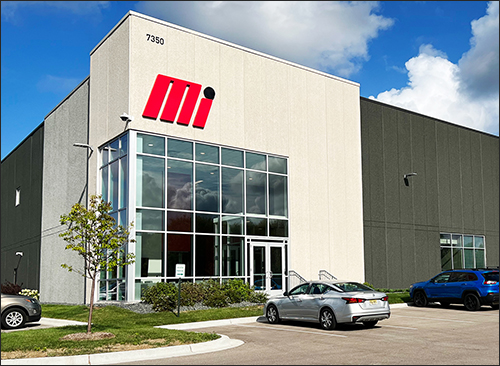 The larger space will allow for integrated use, including a regional sales and support center, classrooms for employee and customer training, a regional fulfillment center, assembly and fabrication shops, a proof-of-concept design area, and engineering labs for customer product and demonstration engagement. Motion Ai's capabilities at this facility include large conveyor system builds, complete automation system builds, robotic and machine vision solutions, expanded pneumatic and machine control solutions, machining, welding and more.
The larger space will allow for integrated use, including a regional sales and support center, classrooms for employee and customer training, a regional fulfillment center, assembly and fabrication shops, a proof-of-concept design area, and engineering labs for customer product and demonstration engagement. Motion Ai's capabilities at this facility include large conveyor system builds, complete automation system builds, robotic and machine vision solutions, expanded pneumatic and machine control solutions, machining, welding and more.
"We wanted to meet the growing demands of our customers and the industry by growing every facet of automation and robotics solutions," said Aurelio Banda, Motion Ai's senior VP for automation intelligence, in a prepared statement. "Our investments allow for future, incremental expansion within our structure up to 30 percent beyond our current growth plans. This will also allow us to add employees over time."
"Opening this state-of-the-art automation facility represents just one more way we anticipate our customers' needs in production efficiency across virtually all industry sectors," added Randy Breaux, the company's president, in the statement. "This is an important step in our long-term growth strategy, and we're excited to see the upward trajectory of technological innovation and services that the new Motion Ai location will support."

